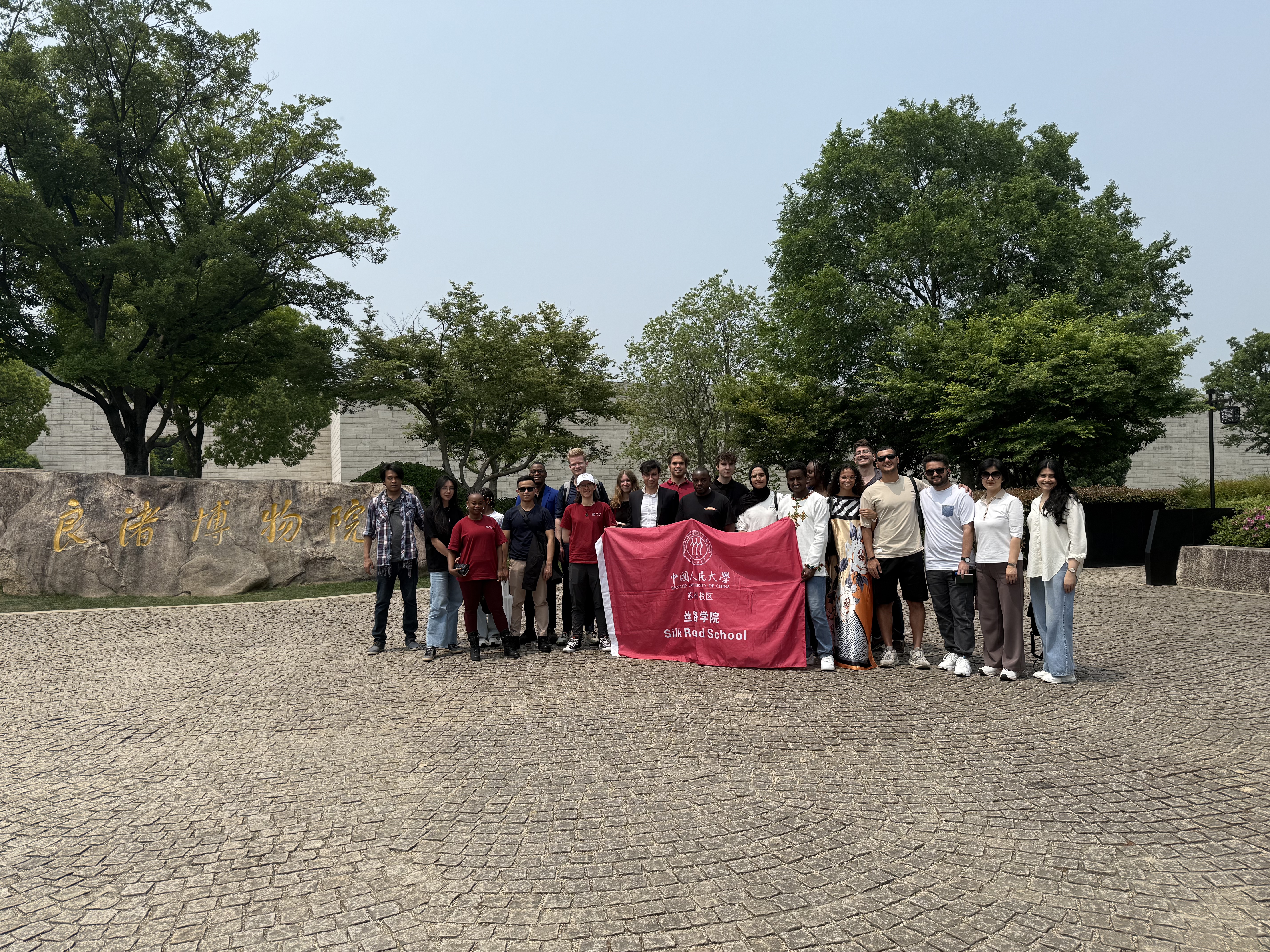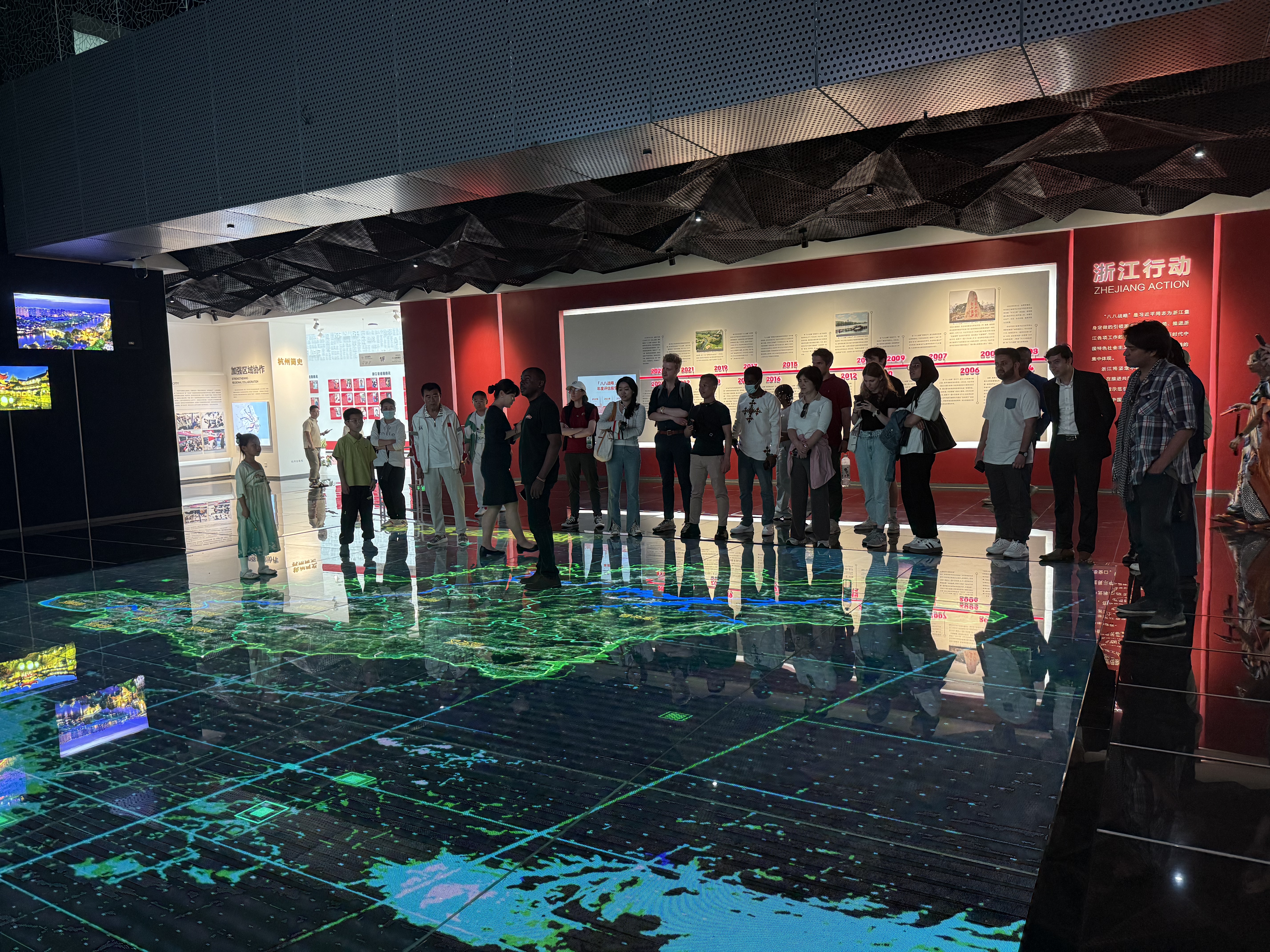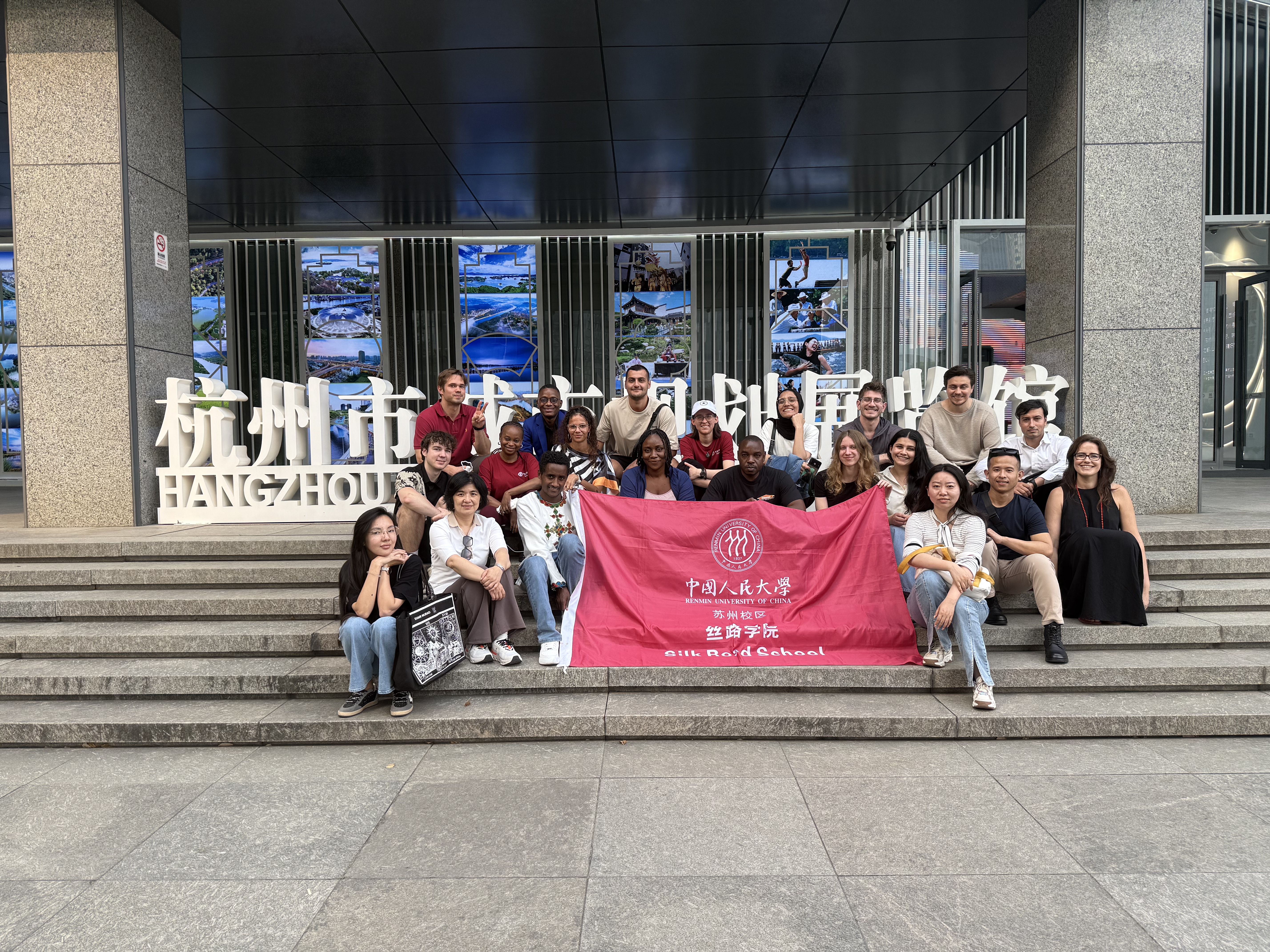News
Silk Road School Students Conducted Field Study in Liangzhu Civilization and Hangzhou's Urban Planning
On April 20, the Silk Road School organized a field study titled "Chinese Path to Modernization" for 24 international students from 17 countries. Visiting the Liangzhu Museum and Hangzhou Urban Planning Exhibition Hall, the group immersed themselves in China's 5,000-year civilization and contemporary urban development strategies, gaining deeper insights into the continuity of Chinese heritage and its modern transformation.

As a key component of the "Overview of China's Development" curriculum, this study integrated two modules— "Tracing Civilizational Roots" and "Urban Evolution" —to systematically demonstrate the historical foundations and innovative practices of Chinese modernization.
At the Liangzhu Museum, students examined archaeological artifacts, site reconstructions, and digital displays that position Liangzhu as a seminal origin of Chinese civilization. Exquisitely crafted jade cong (ritual tubes) and bi (discs) drew particular attention. The cong 's symbolic motifs revealed Liangzhu's religious cosmology, offering clues to early societal structures. Koen (Netherlands) was fascinated by the ceremonial use of jade: "I learned these weren't just ritual objects—they embodied power and spiritual beliefs." Conor (U.S.) marveled at the craftsmanship: "The deity-animal patterns on these 5,000-year-old jades are astonishingly intricate!"

The Urban Planning Exhibition Hall showcased Hangzhou's evolution from Liangzhu culture to the Southern Song capital and now a "city blending historical legacy, innovation, and ecological sustainability." Students were captivated by a Southern Song dynasty model, where ancient imperial streets seemed to mirror modern avenues. Interactive floor projections allowed them to "step on" districts to trigger video introductions, blending traditional aesthetics with digital economy narratives.

This journey—from Neolithic jades to smart-city blueprints—highlighted China's unique approach to sustainable development through cultural continuity. As a flagship program of the Silk Road School's China studies curriculum, it exemplifies the "theory + practice" pedagogy, offering multidimensional perspectives on China's development while fostering cross-cultural dialogue.

